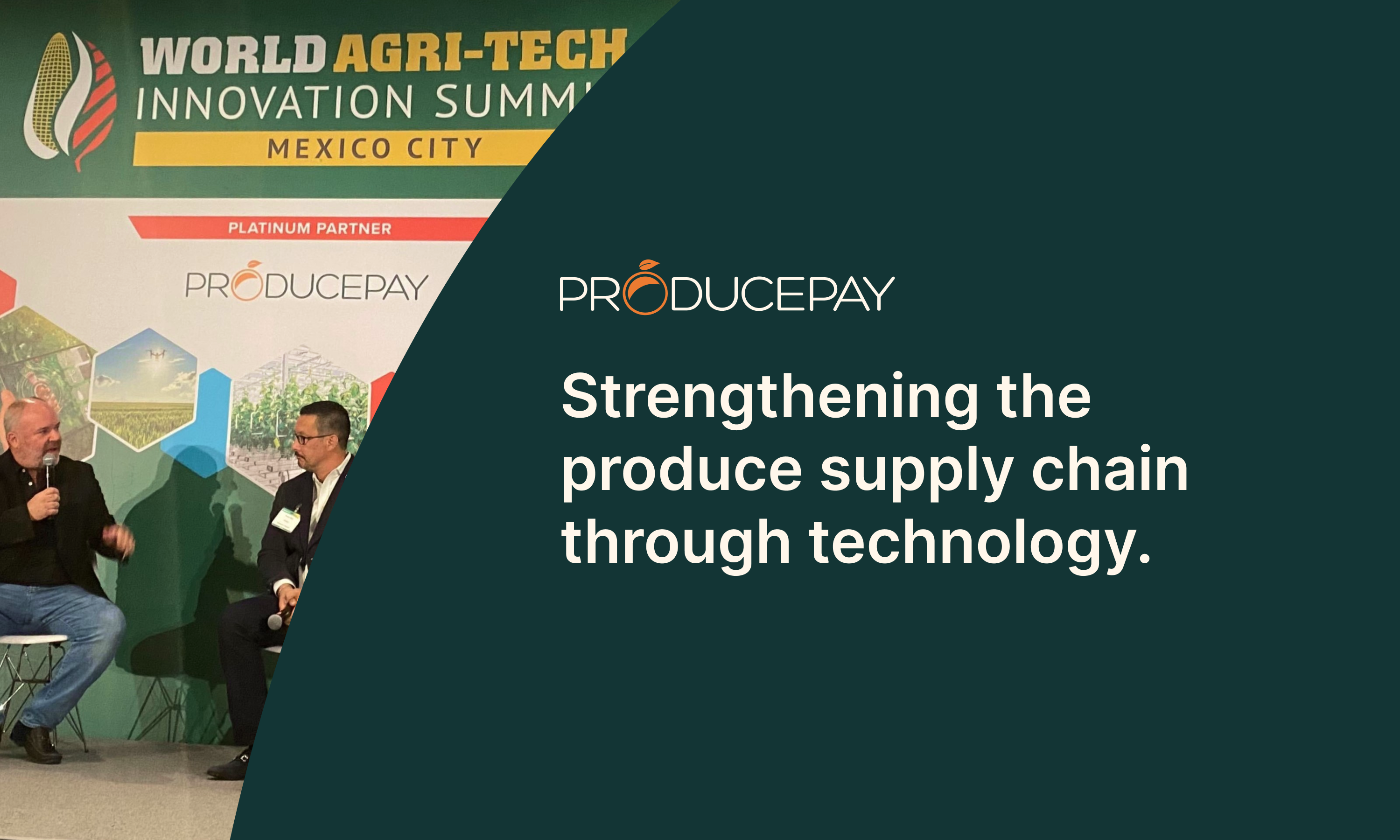
Strengthening the produce supply chain through technology
Stakeholders in the fresh produce industry face unprecedented challenges around pricing volatility, market access, and trust across the supply chain. As global demand fluctuates and consumer expectations rise, building resilience within the sector requires a shift towards transparency and efficiency—two objectives that can be increasingly met through innovative technology.
Technology’s role in strengthening fresh produce supply chains is a prominent focus for industry leaders, particularly those exploring how digital innovation can transform relationships and improve outcomes for growers, marketers, and retailers alike.
At the World Agri-Tech Summit 2024 in Mexico City, an expert panel led by Patrick McCullough, CEO of ProducePay, with insights from the industry leaders Randy Riley (Golden Sun Insights), Adolfo Arroyave (Zano Fresh), and Enrique Domínguez (California Giant Berry Farms), explored how advanced technology solutions can foster a resilient, transparent supply chain, and unite stakeholders around common goals: predictability, quality, and trust.
Navigating a complex, volatile industry.
Fresh produce markets are particularly vulnerable to sudden changes. This environment creates pressure on growers, who must meet high standards despite unpredictable conditions, from climate impacts to market shifts.
Traditionally, financial risk and market access have been major challenges for growers, as capital largely flows through buyers. To address the volatility and risk growers face, Patrick outlined ProducePay’s strategy to reconfigure the vertical, in order to distribute risk more evenly across stakeholders, including buyers, marketers, and growers. This approach aims to mitigate the financial burden on growers and create a more balanced distribution of responsibilities within the supply chain.
Boosting efficiency with data and technology.
Technology can transform production, making it more efficient and sustainable. Predictive analytics, for example, offering insights into market demand, could help growers align production with anticipated needs. Tools powered by AI and sensor implementation can suggest optimal planting, watering, fertilizing and harvesting schedules based on both historical data and current conditions, which not only reduces waste but also maximizes yield.
Adolfo, from Zano Fresh, underscored the critical need for tools that deliver real-time market data to growers, offering insights into pricing, demand, and buyer trustworthiness. However, he pointed out that although these tools can greatly improve operational efficiency, they are often financially out of reach for growers.
For crops like berries, where market dynamics shift quickly, having access to real-time data can be crucial. These tools can help growers keep pace with shifting demands, meeting retailer expectations despite logistical and production challenges that arise in a dynamic market, emphasized Enrique.
Building trust and partnerships with enhanced transparency and traceability.
Transparency and traceability are two factors essential to building trust between growers and buyers. For example, real-time data collection can help monitor quality and predict supply needs. Enrique shared how California Giant Berry Farms uses data collection and monitoring at each production stage to provide accurate supply forecasts, optimizing quality assurance and strengthening relationships with buyers.
Companies like Zano Fresh are already fostering trust by operating with full transparency. Arroyave shared how his team keeps buyers informed of expected yields and potential market changes, ensuring an open dialogue about factors that might impact supply. EnriqueDomínguez explained that at California Giant Berry Farms, the company’s focus on data collection allows them to offer accurate, up-to-date supply information, helping both growers and buyers optimize their sales and build trust through reliable forecasting.
Partnerships across the supply chain can consequently help offset expenses, distributing the cost of technology among stakeholders who benefit from increased efficiency and reliability. Retailers and marketers who support these initiatives can also gain better access to high-quality produce that aligns with consumer demands for sustainable and transparent sourcing.
Mitigating pricing volatility through fixed-price and technology
Volatility in pricing remains one of the industry’s biggest challenges, affecting the predictability and sustainability of the entire supply chain. As costs fluctuate due to seasonal changes, supply chain disruptions, or external market conditions, pricing becomes a contentious issue between growers and buyers. Growers often have to bear the brunt of these fluctuations, while buyers may underestimate the costs and efforts behind each product.
According to Randy, fixed-price agreements are one solution for providing stability, but their success depends heavily on transparency and accurate data. He emphasized that these agreements offer a foundation for pricing consistency, yet require transparency and accurate data. Here is where digital platforms and predictive analytics help us to access up-to-date information on market conditions, production costs, and demand forecasts.
The fresh produce industry is experiencing a transformative change. As highlighted, integrating technology is not only essential for driving efficiency, transparency, and stability, but also for building stronger partnerships across the supply chain. By harnessing tools that improve data sharing, streamline processes, and stabilize pricing, growers and buyers can work more collaboratively to address longstanding challenges like pricing volatility and traceability gaps.
However, achieving a tech-enabled, resilient supply chain goes beyond adopting new tools—it requires a cultural shift toward shared responsibility. Stakeholders must work together to make technology accessible and equitable, while trust and transparency are fundamental to this process.
ProducePay is driving this transformation by working to create a fairer landscape for everyone. By improving access to real-time data technology, ProducePay is helping to build the trust and transparency that produce supply chain needs.
As the industry moves forward, leveraging digital innovation alongside collaborative relationships will be key to creating a fresh produce supply chain that is more predictable, resilient, and ultimately sustainable.

